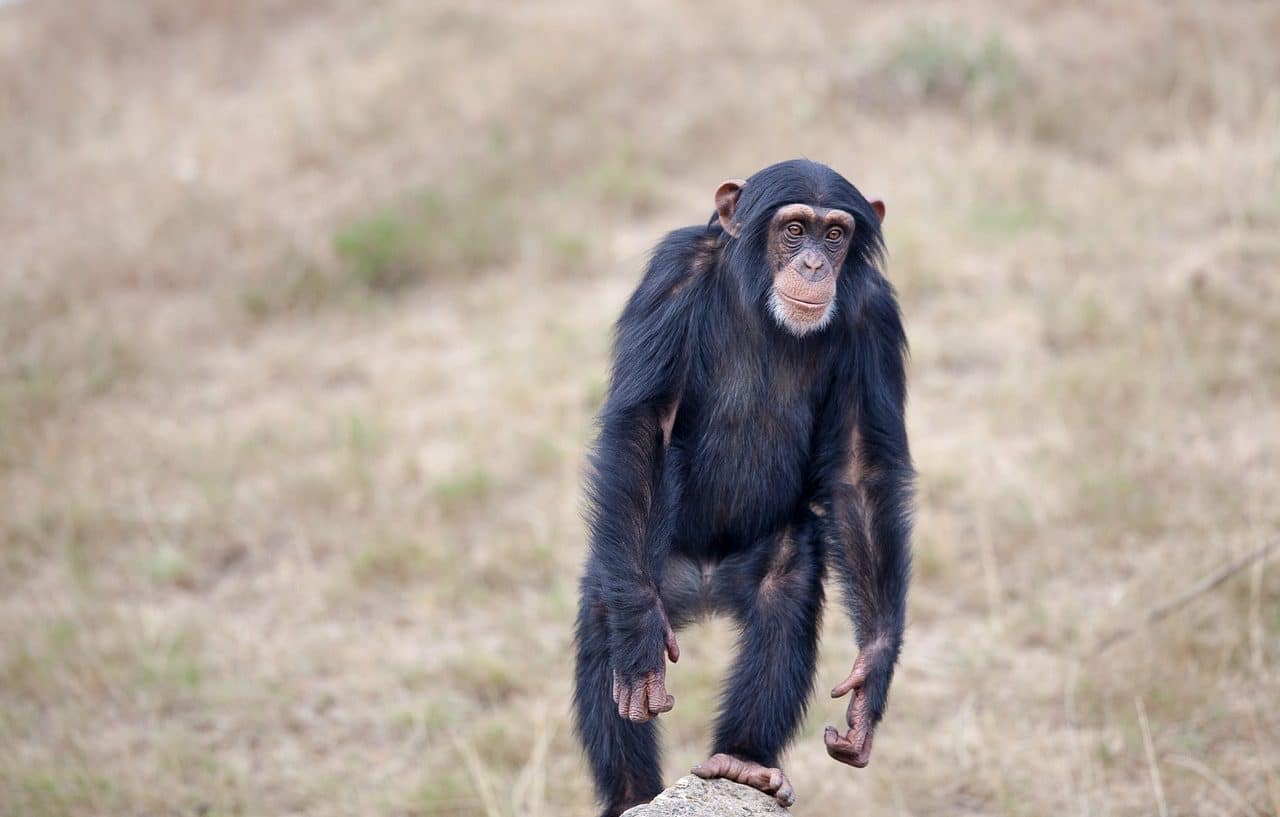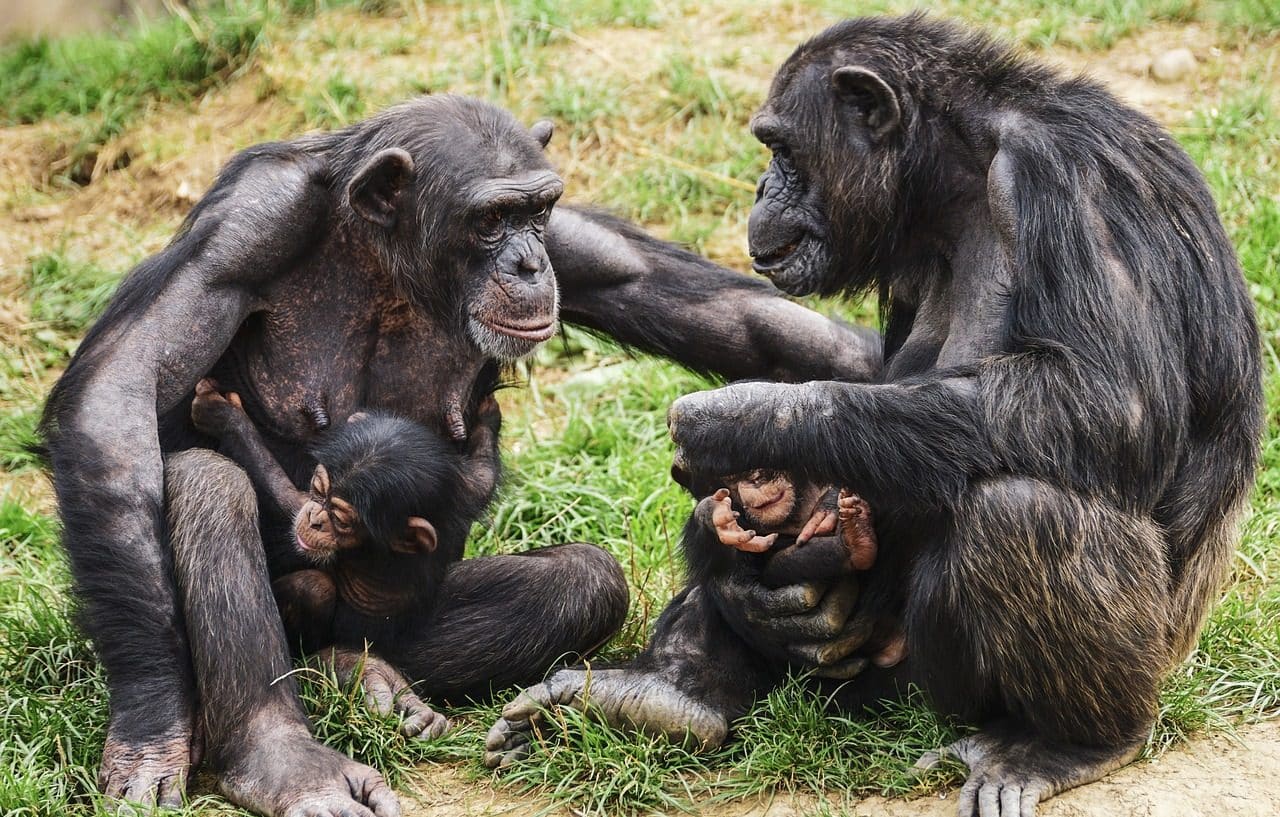
Biology highlights the genetic resemblance between humans and chimpanzees.
A chimpanzee is a mammalian animal that is part of the ape suborder. It is a monkey classified as anthropomorphic , which indicates that it lacks a tail and is part of the group of catarrhines (since its nostrils are divided by a very narrow cartilaginous septum).
It is interesting to note that chimpanzee is a word that comes from the French chimpanzé . This term, in turn, comes from a word in the Bantu language used in the Democratic Republic of the Congo .
Characteristics of a chimpanzee
Genetics reveals that the chimpanzee is the animal that most resembles Homo sapiens : 98% of the genetic code of both is identical. Experts believe that these primates and people shared a common ancestor that existed at least 4 million years ago.
Chimpanzees have a large head with a flattened nose, very marked eyebrows and a beard. Its arms are extensive and much longer than its legs: when it is in an erect position, its hands reach the knee area.
When standing, the chimpanzee can reach a height of 1.7 meters. Thanks to its long arms, it moves from branch to branch, swinging.
With brown fur that covers their entire body except the soles of their feet, palms of their hands, fingers and face, chimpanzees can grasp objects with precision because their thumbs, as well as the big toes of their feet, , are opposable. Sticks and stones are some of the tools of chimpanzees , allowing them to break seed shells and catch termites.

The chimpanzee is among the endangered species according to WWF.
Your behavior
Chimpanzee behavior is social . These animals live in family groups made up of females with their young and a dominant male; Sometimes different families even come together to form tribes where cooperation is recorded.
Conflicts between chimpanzees are frequent, especially when males are temporarily associated. In this framework, a hierarchy emerges and each specimen aims to reach the top.
It should be noted that the babies maintain a close bond with their mother for several years: weaning occurs at 3 years old without interrupting that relationship. From each birth, a single calf is born, after eight months of gestation.
Communication in chimpanzees, on the other hand, is complex. These animals can even learn basic aspects of the sign language used by humans.

There are chimpanzee sanctuaries that seek to contribute to the conservation of these animals.
Chimpanzee diet
The chimpanzee diet is based on leaves, flowers, seeds, tubers, roots, fruits and other plant elements. In any case, their diet is very varied.
Chimpanzees usually eat insects and eggs. They are also capable of hunting for meat ; Likewise, they sometimes feed on carrion. Various research reveals that, when capturing prey, chimpanzees first ingest its brain. This decision would be linked to the organ's nutrients.
Hunting usually targets small vertebrates , such as birds or the young of other mammals . However, they also feed on primates. When hunting, chimpanzees show a high degree of organization .
Relationship with man
The chimpanzee's relationship with man is conflictive. Beyond the enormous DNA resemblance, humans have exploited this monkey , which is a victim of poaching , as is the case with other great apes such as the gorilla , the orangutan and the bonobo.
Hunting of chimpanzees is usually carried out to traffic their meat. Although its consumption used to occur in African countries such as Congo and Uganda , in recent years its demand has grown in Switzerland , France and other European nations.
Chimpanzees, on the other hand, are victims of animal trafficking . There is a market where thousands of dollars are paid for each specimen, which can be used for shows or sold as a pet.
The chimpanzee is also at risk due to the destruction of its habitat . Deforestation of forest and rainforest ; the extension of grazing and cultivation areas; and the development of infrastructure directly affect their subsistence, while global warming – which affects the outbreak of forest fires and drought – is another important factor.
Chimpanzee Conservation
Despite this negative outlook, there are activists who work for the conservation of chimpanzees and other primates, fighting for animal welfare . Among them stands out the British Jane Goodall , famous for her research in the Gombe Stream National Park in Tanzania .
Creator of the Jane Goodall Institute (also known as the Jane Goodall Foundation ), she is recognized for her studies, although there are primatology specialists who question her methods.
A Goodall se la suele mencionar junto a Diane Fossey (cuya figura trascendió gracias a la película "Gorillas in the fog") y Birute Galdikas (experta en orangutanes) como las primatólogas más destacadas del 20th century.
